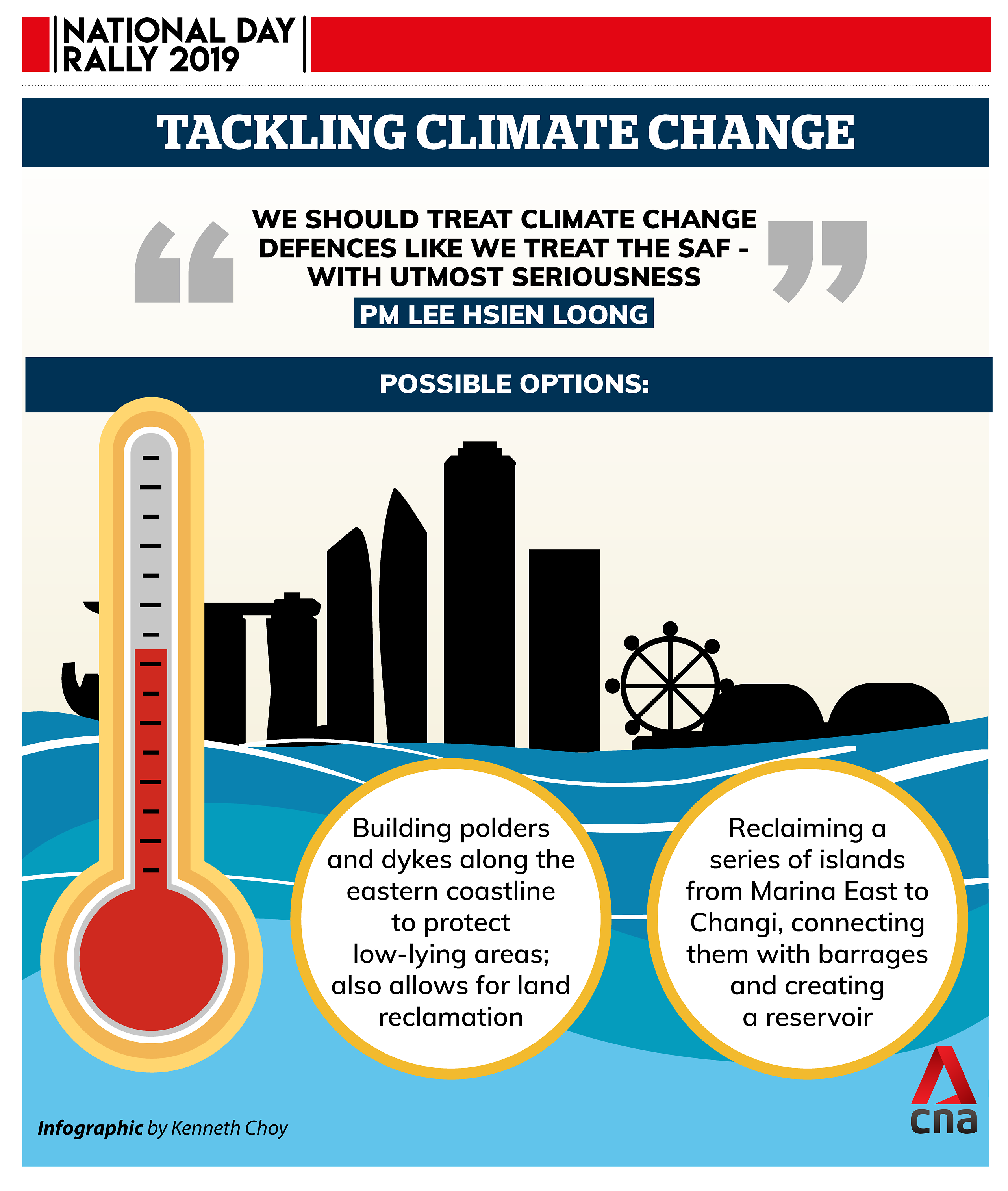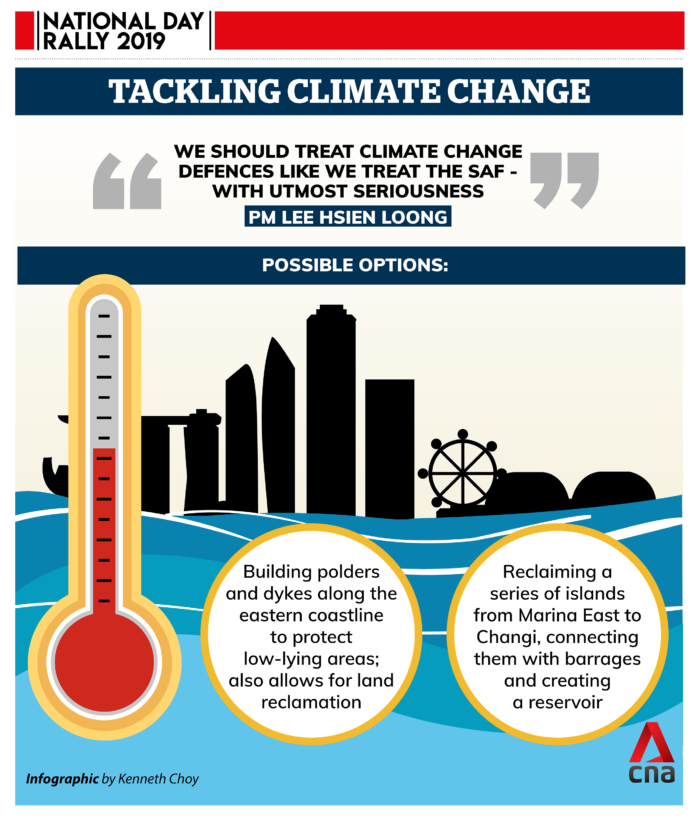SINGAPORE: Tackling the “50 to 100-year problem” of rising sea levels could cost Singapore around S$100 billion or more, said Prime Minister Lee Hsien Loong on Sunday (Aug 18).
In his National Day Rally English speech, Mr Lee highlighted that Singapore is susceptible to the effects of climate change and especially vulnerable to rising sea levels.
“How much will it cost, to protect ourselves against rising sea levels? My guess is probably $100 billion dollars over 100 years, quite possibly more,” said Mr Lee.
“If we only have 10 years to solve the problem, we won’t have enough time or resources to do it. But because this is a 50 to 100-year problem, we can implement a 50 to 100-year solution.”
Climate change defences should be treated with utmost seriousness, just like the Singapore Armed Forces (SAF), said Mr Lee.
He said there is a need to “work steadily at it, maintain a stable budget year after year, keep your eye on the target and do it over many years and many generations”.
READ: NDR 2019: New retirement, re-employment ages of 65 and 70 by 2030; higher CPF contributions for older workers
INSPIRATION FROM ABROAD
While Singapore has implemented localised measures to protect individual buildings and developments – new developments are required to be built at least 4m above sea level, and this requirement is even higher for critical infrastructure – these solutions will not be enough, said Mr Lee.
“We have many older buildings. These cannot be lifted up, or transported to higher ground,” explained Mr Lee.
“In fact, large parts of Singapore are low-lying, and we need to protect these low-lying areas as a whole.”
As such, coastal defences need to be built, said Mr Lee.
“We have studied our whole coastline in detail, and we’ve divided it into different segments,” he said.
READ: NDR 2019: Reduced university and polytechnic fees for lower-income students from next academic year
READ: NDR 2019: More pre-school subsidies as Singapore set to spend more on early childhood education
Work will be prioritised for more “critical” areas such as the City-East Coast and Jurong Island segments.
In the city area for instance, there are plans to build a second pump house at the Marina Barrage. The current pump house contains seven giant pumps, said Mr Lee.
“We built the Marina Reservoir and Marina Barrage, to protect the city area from flooding,” added Mr Lee. “When it rains heavily during high tide, water is pumped out of Marina Reservoir into the sea, so that rain falling in the city area can drain into reservoir. When sea levels rise, one pump house will not be enough.”
Other solutions are required for the eastern coastline of Singapore, pointed out Mr Lee.
One option – implemented by the Netherlands – is the construction of what the Dutch call “polders”, which is land that is reclaimed from the sea.
Polders are created by first building a seawall in the water, before pumping out the water behind the seawall to create dry land. This land can be lower than sea level, but water has to continually pumped out.
This is a “serious option” for the Republic, said Mr Lee.
READ: New reclamation method aims to reduce Singapore’s reliance on sand
A small polder is currently being built at Pulau Tekong, added Mr Lee, to gain some “experience” operating one. The new land will be used for Singapore Armed Forces training.
Another alternative is to reclaim a series of islands offshore, from Marina East to Changi, said Mr Lee.
They can be connected by barrages, and a freshwater reservoir similar to Marina Reservoir could be created, he explained.

“We will examine all the options carefully, and when the time comes, we will decide what is the best way to do it,” said Mr Lee. “This problem has good engineering solutions, although they will all cost money.”
What matters is that Singapore’s climate change plans must be implemented “progressively” and kept “flexible”, emphasised Mr Lee.
“But we must start now and sustain the effort, as the Dutch have done over centuries, and as we have done with the SAF,” he said. “We must make this effort. Otherwise one day, our children and grandchildren will be ashamed of what our generation did not do.”





